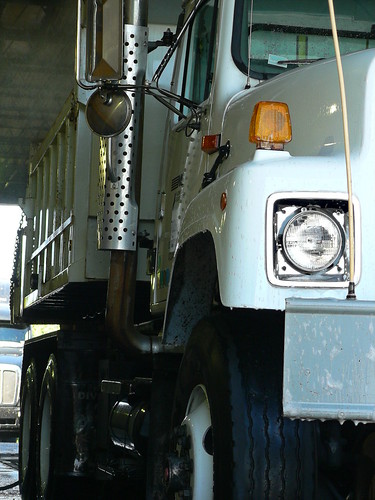How Much Does Construction Site Pollution Impact The Environment?

Building and road construction have played a significant role in cultures and societies from the beginning of time. Historically, construction utilized natural materials: the Mayans used quarried stones to build their temples, Solomon had access to the cedars of Lebanon, and the Bedouins constructed their tents from the hides of camels and goats.
Today, however, an increasing amount of manmade materials are being used in construction projects; these materials are altered from nature and cannot be re-circulated in the cycle of life. Regardless of the type of materials used, it must be acknowledged that all construction, to some degree or another, disrupts the normal course of nature. Just how much does construction impact environment? What becomes of the waste or pollution caused by construction?

The first issue to be addressed in the discussion of construction pollution is the type of pollutants involved. Identification allows for evaluation of the impact on the environment. There are various categories of construction pollutants:
Evaluating the effect of pollutants requires looking at a broad area of potential impact. How does construction affect individual people, local water sources and the general environment? One area that has been massively affected by construction is the United Arab Emirates. As construction has boomed in the UAE, so has the incidence of respiratory disease among children. Many people point directly to the air pollution caused by all of the construction as the cause of this increase. What exactly is polluting the air? It is the demolition of old buildings, the use of multitudes of diesel engines and the burning of building scraps that contain toxic materials? Dust and exhaust from these sites means that soot, silicates, hydrocarbons, plastics, nitrogen oxides, sulphates and fumes from a host of materials such as paint thinners, varnish, treated woods, etc. are being released into the air (2).
The example of the UAE) reveals the very personal effects of construction pollution, which include an increase in respiratory illnesses (such as bronchitis, asthma, etc.) and certain cancers. In fact, according to statistics, 13% of people in the UAE suffer from asthma, and 40% of those people are children.
California is another area with booming construction. There, the Union of Concerned Scientists has issued a booklet outlining specific effects of construction in the state, linking it to premature deaths, lost work days, school absences, acute bronchitis, respiratory and cardiovascular hospitalizations and asthma (3).
Construction, by default, has a negative impact on the environment as land is cleared and trees are cut down. Even the removal of small vegetation has a drastic impact on the environment. The same pollutants that affect human health have an impact on the plant and animal life in the surrounding areas. Research on construction sites reveals that “transportation resources,” or the means required to transport construction materials, has the largest environmental impact (4). This means that fuel and other pollutants related to trucking in building materials cause the greatest disruptions to the ecosystem.
One must also keep in mind the additional effects of construction wastes, inert water waste, damage to the normal balance of nature and the effect that the various pollutants have on wildlife.
If you still think that construction is really not a great cause of environmental pollutants, think again. A “big rig” truck would have to travel for nearly 1,000 miles to produce the same amount of pollution emitted by a backhoe that is used for one hour and nearly 1500 miles to compare with the pollution released during one hour of running a bulldozer (5).
Simply knowing the environmental impact of construction is not enough. Something must be done to reduce it. Often times it is many small things that add up to have one big, positive effect. Construction companies must be conscientious of how their movements affect the environment. They must step up and take responsibility. There are many ways that they can do this including:

Construction will almost continue as long as mankind exists. It is a necessary part of life. However, one generation can pay forward to future generations by standing up and being responsible for the pollutants caused by progressive construction.
Chris Turberville-Tully, who studied environmental issues in college, writes for Muck Away in England. When not writing or blogging, Chris enjoys a holiday at the beach or a drive through the countryside with his family. Follow Chris on G+.
